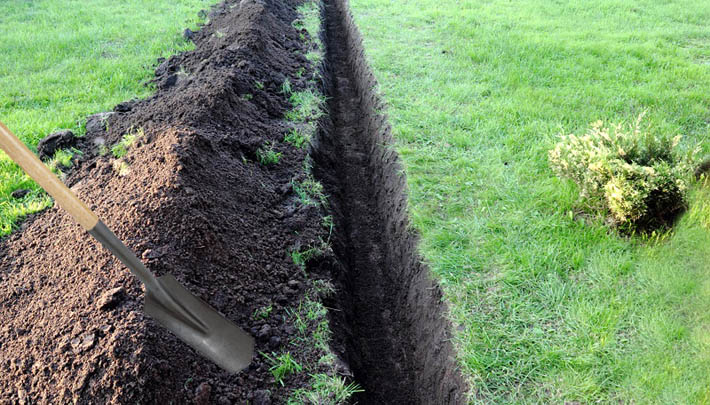Learn how to use a trenching shovel for which work?
Because most people believe that all shovels serve to dig holes in the ground. However, according to the design of the blade, each shovel has a specific use.
Digging trenches is a very common activity. Trenches are useful for installing underground pipes. If you have a garden, you’ll surely need to dig trenches every time you want to install or modify your irrigation system.
It’s true that with a regular digging shovel, you can do the job without problem. However, if you don’t have enough skills and experience, it may take longer than normal.

If you want perfect trenches in less time, the indicated tool is a trenching shovel. But not just any trenching shovel, but the best. If you never used one, don’t worry.
Today you’ll learn everything you need to know to use a trenching shovel like a master. You’ll also know some basic features that will help you differentiate a trenching shovel from the rest.
What is Trenching Shovel?
A trenching shovel is a tool used to dig trenches. In contrast to regulate digging shovels, trenching shovels have a narrower head. Most of them use straight handles, but you can also find some models with D-handles.
The most common blade types in trenching shovels are:
- Round blade
- V-shaped blade
- Square blade
Depending on the use, the shovel head can be straight or inclined. In straight heads, the blade tip follows the same direction of the shaft. It’s ideal for cutting and edging s oil. Instead, inclined heads serve to remove soil.
You can find in the market many shovel heads with different inclination angles. The most common are 28, 35 and 90 degrees.
Some trenching shovels used box shaped heads to prevent soil from escaping when removing. Its design allows collecting a greater soil volume in a single movement compared to other models.
Uses of Trenching Shovel?
As you can see, there are different models of trenching shovels. Here’s a list of the different uses you can give to each type.
Cutting and Edging
You can use a trenching shovel with straight blade to cut the ground. This will help you trace the trench path on the surface. Round blades and V-shaped blades are the most suitable in these cases.
You just have to place the tip in the right place and rest your foot on the step. The applied force will help to obtain a better penetration in the ground.
Once the blade is completely buried in the ground, turn the shaft slightly. This will allow you to release the floor and get perfectly clean vertical cuts.
When you finish the job, these types of blades are also useful as edging tools, to correct details on the trench walls.
Removing Loose Soil
After cutting or break the ground, you’ll need a trenching shovel with an inclined head to remove the loose soil. Square and V-shaped blades are perfect for these cases.
To remove the ground, you can use the tip pointing backwards or forwards. The operator is free to choose how to do it according to the conditions of the area and their own comfort.
Box shaped heads are the most efficient because they allow to remove a greater volume of soil in less time. Regular flat blades let escape part of the soil, forcing you to remove several times in the same place.
Conclusion
With everything you just learned about trenching shovels you’re ready to choose the most appropriate for you. Remember that according to the use you’re going to give it, you must correctly choose the blade type and the inclination of the head.
Choose a comfortable tool with an ergonomic handle. Wear protective gloves during work to prevent blister. By following these tips, you’ll become a master on digging trenches.
Leave a Reply
You must be logged in to post a comment.